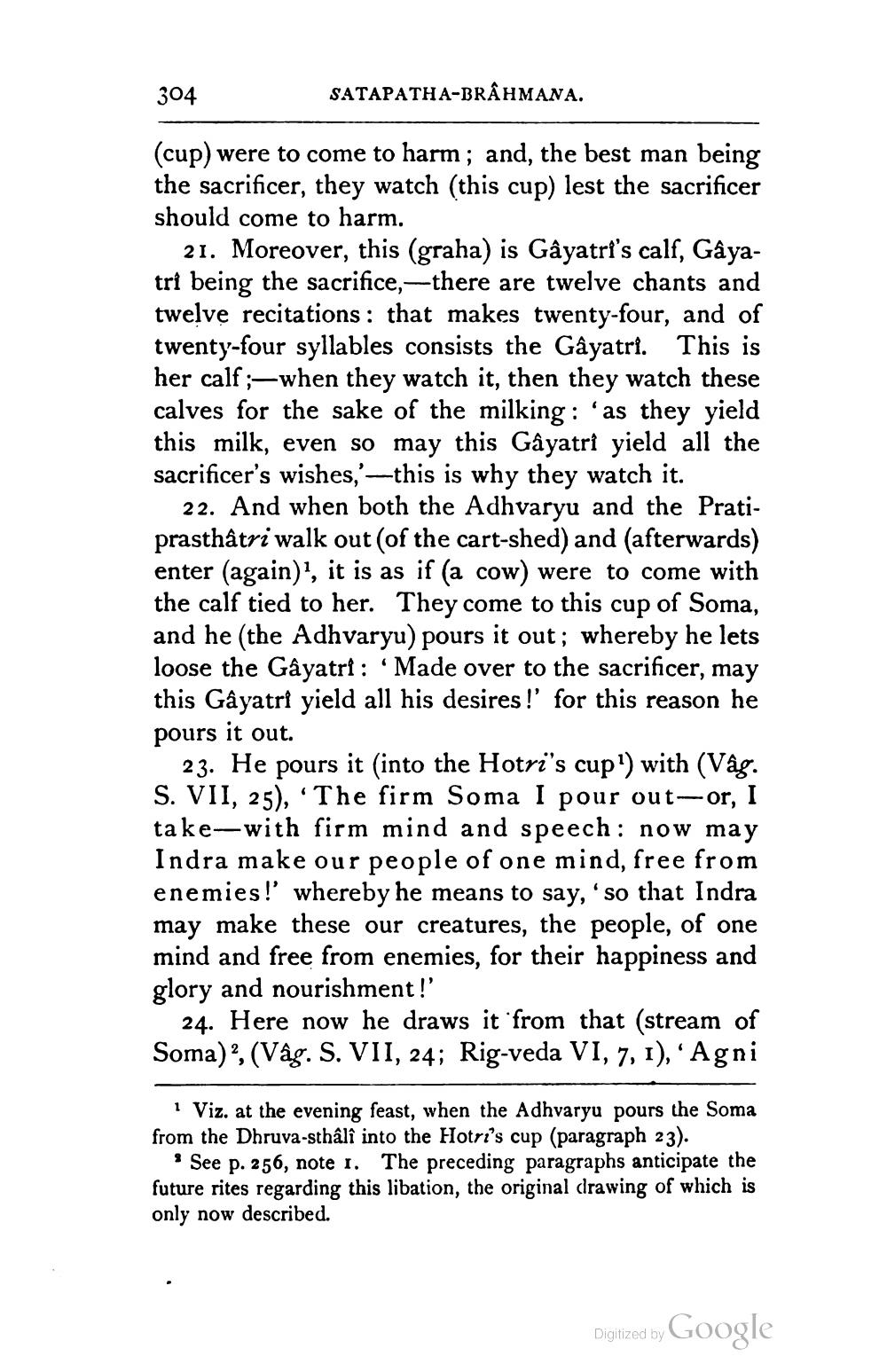________________
304
SATAPATHA-BRAHMANA.
(cup) were to come to harm; and, the best man being the sacrificer, they watch (this cup) lest the sacrificer should come to harm.
21. Moreover, this (graha) is Gâyatri's calf, Gayatri being the sacrifice,- there are twelve chants and twelve recitations : that makes twenty-four, and of twenty-four syllables consists the Gâyatri. This is her calf;—when they watch it, then they watch these calves for the sake of the milking : 'as they yield this milk, even so may this Gayatri yield all the sacrificer's wishes,' - this is why they watch it.
22. And when both the Adhvaryu and the Pratiprasthåtri walk out (of the cart-shed) and (afterwards) enter (again)", it is as if (a cow) were to come with the calf tied to her. They come to this cup of Soma, and he (the Adhvaryu) pours it out; whereby he lets loose the Gâyatri : 'Made over to the sacrificer, may this Gayatri yield all his desires !' for this reason he pours it out.
23. He pours it into the Hotri's cup') with (Vâg. S. VII, 25), “The firm Soma I pour out-or, I take-with firm mind and speech: now may Indra make our people of one mind, free from enemies!' whereby he means to say, 'so that Indra may make these our creatures, the people, of one mind and free from enemies, for their happiness and glory and nourishment!'
24. Here now he draws it from that (stream of Soma) ?, (Vâg. S. VII, 24; Rig-veda VI, 7, 1), 'Agni
1 Viz. at the evening feast, when the Adhvaryu pours the Soma from the Dhruva-sthâlî into the Hotri's cup (paragraph 23).
See p. 256, note 1. The preceding paragraphs anticipate the future rites regarding this libation, the original drawing of which is only now described.
Digitized by Google




